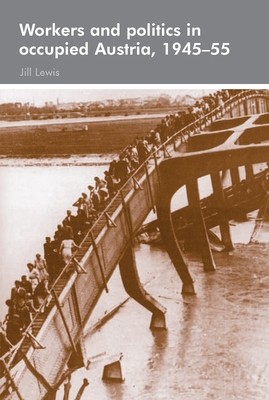
- We will send in 10–14 business days.
- Author: Jill Lewis
- Publisher: Manchester University Press
- ISBN-10: 0719073510
- ISBN-13: 9780719073519
- Format: 15.6 x 23.4 x 1.2 cm, softcover
- Language: English
- SAVE -10% with code: EXTRA
Reviews
Description
In March 1946 Winston Churchill warned the world about the 'Iron Curtain' that had descended across Europe and behind which now lay, he said, the eight capitals of the ancient states of central and Eastern Europe. In fact, one of these eight, Vienna, escaped absorption into the Soviet bloc. Between 1945 and 1955, Austria and its capital were occupied by the Four (increasingly mutually antagonistic) Allied Powers. During this decade of confusion, insecurity, suspicion and fear, and confronted by poverty and the threat of famine, Austria's political and economic elites joined forces to promote a culture of political unity and harmony from which eventually emerged the Austrian model of corporatism, commonly referred to as the Social Partnership. Conservatives, Socialists and Communists initially co-operated in a coalition government, industrialists embraced nationalisation, and union leaders abandoned class conflict, accepting wage controls in return for a role in national policy
formation. However, by 1948 the two Super-Powers were competing for influence in the country: the USA through the Marshall Plan and the USSR by asserting what it considered to be its rights in the country. Food shortages and low wages started to lead to grass-roots protest, which union leaders opposed and Austrian Communists sought to exploit. These culminated in two mass strikes in 1950, wrongly dubbed the 'September Putsch'.
EXTRA 10 % discount with code: EXTRA
The promotion ends in 15d.19:25:42
The discount code is valid when purchasing from 10 €. Discounts do not stack.
- Author: Jill Lewis
- Publisher: Manchester University Press
- ISBN-10: 0719073510
- ISBN-13: 9780719073519
- Format: 15.6 x 23.4 x 1.2 cm, softcover
- Language: English English
In March 1946 Winston Churchill warned the world about the 'Iron Curtain' that had descended across Europe and behind which now lay, he said, the eight capitals of the ancient states of central and Eastern Europe. In fact, one of these eight, Vienna, escaped absorption into the Soviet bloc. Between 1945 and 1955, Austria and its capital were occupied by the Four (increasingly mutually antagonistic) Allied Powers. During this decade of confusion, insecurity, suspicion and fear, and confronted by poverty and the threat of famine, Austria's political and economic elites joined forces to promote a culture of political unity and harmony from which eventually emerged the Austrian model of corporatism, commonly referred to as the Social Partnership. Conservatives, Socialists and Communists initially co-operated in a coalition government, industrialists embraced nationalisation, and union leaders abandoned class conflict, accepting wage controls in return for a role in national policy
formation. However, by 1948 the two Super-Powers were competing for influence in the country: the USA through the Marshall Plan and the USSR by asserting what it considered to be its rights in the country. Food shortages and low wages started to lead to grass-roots protest, which union leaders opposed and Austrian Communists sought to exploit. These culminated in two mass strikes in 1950, wrongly dubbed the 'September Putsch'.


Reviews